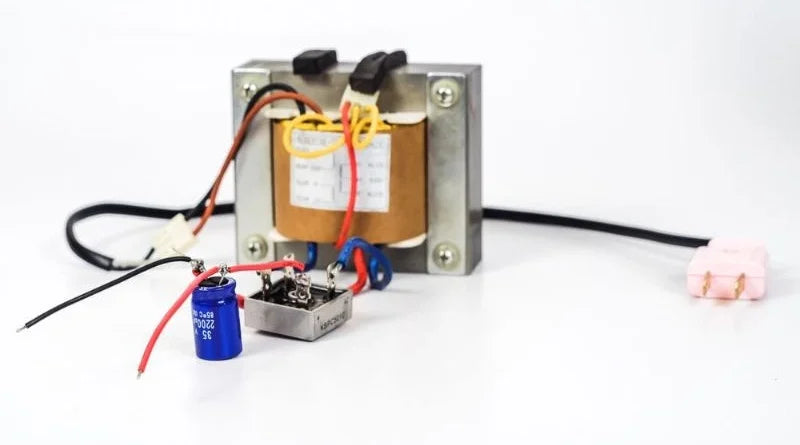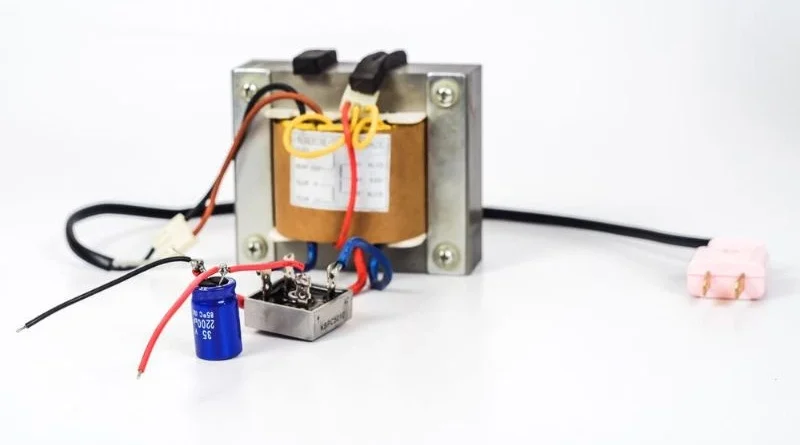
In today's world, where electricity powers nearly every aspect of our lives, efficient energy conversion is more important than ever. A key component that plays a crucial role in this process is the rectifier bridge. This discreet device may not attract much attention, but its importance cannot be underestimated.
A bridge rectifier is a circuit that converts alternating current (AC) to direct current (DC). It is widely used in various electronic applications, from power supplies to motor control systems. By rectifying AC voltage, the bridge rectifier provides a stable and reliable DC power source, allowing countless devices to operate smoothly.
The concept behind the bridge rectifier is elegantly simple, yet extremely effective. It consists of four diodes arranged in a bridge configuration, hence its name. These diodes act as one-way valves and allow current to flow in only one direction. As the AC voltage alternates between the positive and negative half of the cycle, the diodes ensure that only the positive half is passed, effectively rectifying the waveform.
The beauty of the bridge rectifier is its versatility. It can handle different input voltages and is therefore suitable for many applications. Whether converting low voltage signals or high voltage grid power, the bridge rectifier can adapt and provide the desired output.
Additionally, the bridge rectifier is a popular choice in power electronics due to its efficiency. By minimizing energy losses during the conversion process, it helps save electricity and reduce waste. This not only benefits the environment, but also means cost savings for consumers and businesses.
In short, the bridge rectifier is a gateway to efficient energy conversion. Its ability to convert alternating current to direct current accurately and reliably makes it an essential component of countless electronic devices. As we delve deeper into the world of bridge rectifiers, we will explore their features, applications, and advancements that continue to shape the field of power electronics. So let's go on this journey together and uncover the secrets of the rectifier bridge.
What is a bridge rectifier?
A bridge rectifier is an essential part of electronic circuits, especially power supplies. It converts alternating current (AC) to direct current (DC), allowing electronic devices to operate efficiently. By rectifying the AC waveform, a bridge rectifier ensures that current flows in only one direction, providing a stable and reliable power source.
The bridge rectifier consists of four diodes arranged in a bridge configuration. These diodes are semiconductor devices that allow current to flow in one direction and block it in the opposite direction. When an AC input is applied to the rectifier bridge, the diodes alternately conduct and interrupt the current, effectively rectifying it.
One of the main advantages of a bridge rectifier is its ability to handle high currents and voltages. This makes it suitable for a variety of applications, from small electronic devices to large power systems. Furthermore, bridge rectifiers have a compact and simple design, which makes them cheap and easy to manufacture.
When selecting a bridge rectifier, it is important to consider its maximum current and voltage ratings, as well as its forward voltage drop. These specifications determine the suitability of the rectifier for a specific application. It is also important to note that bridge rectifiers generate some heat during operation, so adequate heat dissipation is necessary to ensure their longevity.
In short, a bridge rectifier is a crucial component in electronic circuits that converts alternating current to direct current. Its ability to rectify current and provide a stable power source makes it indispensable for many applications. By understanding the principles and specifications of bridge rectifiers, engineers and hobbyists can design and build efficient and reliable electronic systems.
How does a rectifier bridge work?
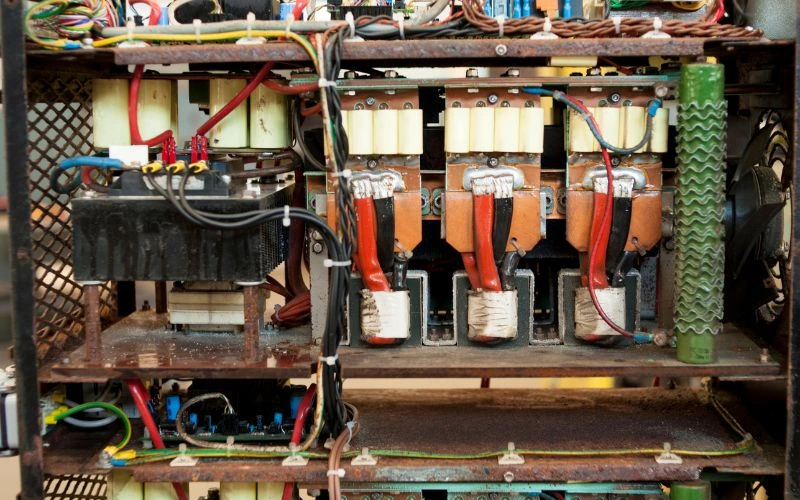
A bridge rectifier is an essential component in electronic circuits that converts alternating current (AC) to direct current (DC). It is widely used in power supplies and electronic devices to ensure a stable and reliable DC power supply.
At its core, a bridge rectifier consists of four diodes arranged in a bridge configuration. These diodes are semiconductor components that allow current to flow in only one direction. By strategically placing these diodes, the bridge rectifier can effectively convert AC power to DC power.
When an alternating voltage is applied to the input of the rectifier bridge, the diodes alternately conduct and block the current. During the positive half cycle of the AC waveform, two diodes conduct, allowing current to flow in one direction through the load. During the negative half-cycle, the other two diodes conduct, reversing the direction of the current. This process effectively equalizes the AC waveform, resulting in a pulsating DC output.
To smooth out fluctuations and obtain a more stable DC output, a filter capacitor is often connected in parallel with the load. The capacitor charges during periods of high voltage and discharges during periods of low voltage, reducing output ripple.
The bridge rectifier offers several advantages over other rectifier configurations. It has higher efficiency because all four diodes are used in the rectification process. Additionally, it can withstand higher currents and voltages, making it suitable for a wide range of applications.
In conclusion, bridge rectifier is a crucial component in converting AC to DC in electronic circuits. Its simple yet effective design ensures efficient and reliable rectification, ensuring a consistent and stable DC power supply.
What are the benefits of using a bridge rectifier?
A bridge rectifier is an essential part of many electronic devices because it converts alternating current (AC) to direct current (DC). It offers several advantages that make it a popular choice in many applications.
One of the main advantages of a bridge rectifier is its efficiency. In contrast to other rectifier configurations such as half-wave rectifiers, the bridge rectifier uses both halves of the AC input waveform. This means it can convert a greater percentage of input power into usable DC power, resulting in less power loss and greater overall efficiency.
Another advantage is the ability of the rectifier bridge to handle high currents. It consists of four diodes arranged in a bridge configuration, allowing it to handle higher currents than other rectifier designs. This makes it suitable for applications that require high power outputs, such as: B. Power supplies for electronic devices or industrial plants.
Additionally, the rectifier bridge offers better voltage regulation. It produces a smoother DC output by rectifying the positive and negative halves of the AC input waveform. This results in a more stable and regulated DC voltage, which is critical for sensitive electronic circuits that require precise voltage levels.
Furthermore, the rectifier bridge is compact and economical. Its simple design and use of commercially available diodes make it a cost-effective solution for AC to DC conversion. Its compact size allows for easy integration into a variety of electronic devices, making it a versatile choice for many applications.
In summary, the bridge rectifier offers several advantages that make it the preferred choice for AC to DC conversion. Its efficiency, ability to handle high currents, voltage regulation, and cost-effectiveness make it a reliable component in many electronic devices and power supplies.
What are the disadvantages of using a bridge rectifier?
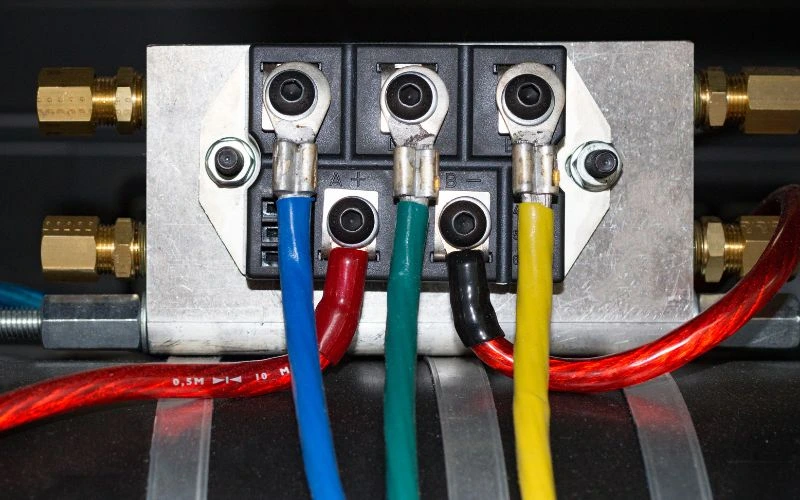
A bridge rectifier is a circuit widely used in electronic devices to convert alternating current (AC) to direct current (DC). Although it offers several advantages, it also has some disadvantages that must be taken into consideration.
One of the main disadvantages of using a bridge rectifier is the voltage drop across the diodes. Each diode in the rectifier bridge causes a drop of about 0.7 volts. This means that the output voltage of the rectifier is lower than the input voltage, resulting in power loss. This voltage drop can be significant, particularly in low voltage applications.
Another disadvantage is the creation of harmonic distortions. If the AC input voltage is not a perfect sine wave, the bridge rectifier may introduce harmonic components into the output waveform. This can cause problems for sensitive electronic devices that require a clean, stable DC power supply.
The bridge rectifier circuit also has a relatively high output ripple voltage. The rectifier output voltage is not completely uniform and contains small fluctuations or ripples. This can be problematic in applications that require accurate and stable DC voltage.
Furthermore, bridge rectifiers are not suitable for high frequency applications. The diodes used in the rectifier have a certain response time that limits the operating frequency range. At high frequencies, diodes may not be able to switch fast enough, resulting in inefficient rectification.
In summary, although bridge rectifiers offer many advantages in converting AC to DC, they also have disadvantages. Understanding these limitations is critical to selecting the appropriate rectifier circuit for specific applications.
What are the applications of bridge rectifiers?
Bridge rectifiers are important electronic components used in many different applications. Their ability to convert alternating current (AC) to direct current (DC) makes them indispensable in many electronic devices. Let's look at some common applications where bridge rectifiers play a crucial role.
One of the main applications of bridge rectifiers is in power supplies. They convert alternating current from the main power supply into a stable direct voltage that can be used to power electronic devices. Whether it's a computer, television or other household appliance, bridge rectifiers ensure a stable and reliable DC power source.
Bridge rectifiers are also commonly used in battery charging circuits. They rectify the alternating current from the charger and convert it into direct current to charge the batteries. This is critical in applications such as electric vehicles, portable electronic devices and renewable energy systems.
In motor control circuits, bridge rectifiers convert AC voltage to DC voltage, which is then used to drive the motor. This is particularly important in industrial machines, robots and automation systems where precise control of motor speed and direction is required.
Another application of bridge rectifiers is welding machines. They convert AC input into a DC output required for welding operations. Bridge rectifiers provide the stable, constant DC power required for effective and efficient welding processes.
Furthermore, bridge rectifiers are used in audio devices where they convert the AC signal from audio sources into a DC signal for audio amplification and reproduction. They ensure the smooth functioning of audio devices such as speakers, amplifiers and mixers.
In summary, bridge rectifiers are versatile components with a wide range of applications. From power supplies to battery charging circuits, motor controls to welding machines and audio equipment, bridge rectifiers play an important role in converting AC power to DC power, allowing various electronic devices and systems to operate smoothly .
What different types of bridge rectifiers are there?
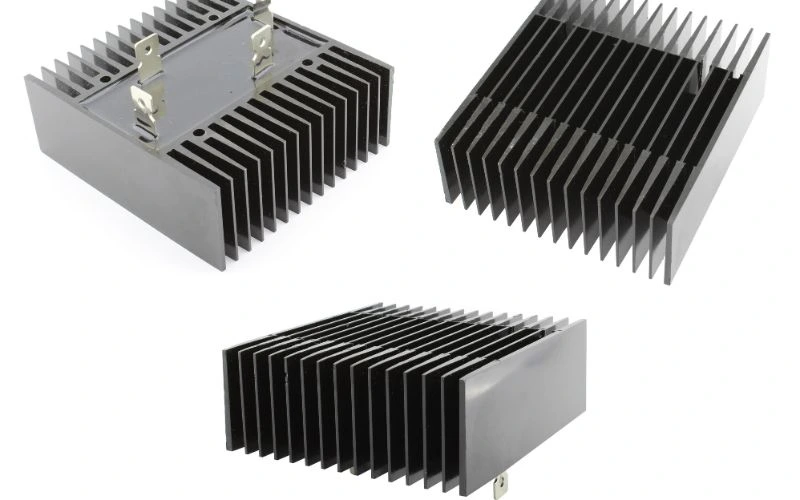
A bridge rectifier is an electronic circuit that converts alternating current (AC) to direct current (DC). It is commonly used in power supplies and various electronic devices. There are different types of bridge rectifiers, each with its own advantages and applications.
One type of bridge rectifier is the single-phase bridge rectifier. It consists of four diodes arranged in a bridge configuration. This type of rectifier is suitable for low-power applications and is often used in small electronic devices such as cell phone chargers.
Another type is the three-phase bridge rectifier. It is used in high power applications where three-phase AC power is available. This type of rectifier is often used in industrial applications, such as motor drives and power supplies for large machines.
Furthermore, there are bridge rectifiers with different voltages and currents. These variations allow the selection of a rectifier that meets the specific needs of the application. It is important to select a rectifier with the appropriate voltage and current ratings to ensure proper operation and reliability.
Additionally, some bridge rectifiers have built-in features such as overcurrent protection and thermal shutdown. These features increase the safety and reliability of the rectifier, making it suitable for critical applications where circuit protection is important.
In conclusion, bridge rectifiers are crucial in converting AC to DC in various electronic devices. Understanding the different types of bridge rectifiers and their applications can help in selecting the right rectifier for a specific application. Whether it is a single-phase or three-phase rectifier or with specific voltage and current ratings, choosing the appropriate rectifier ensures efficient and reliable power conversion.
What are the main components of a rectifier bridge?
A bridge rectifier is an essential part of many electronic devices because it converts alternating current (AC) to direct current (DC). Understanding its main components is crucial for anyone who works with electrical circuits or is interested in electronics. In this article, we will look at the important elements that make up a rectifier bridge.
The main components of a bridge rectifier include four diodes arranged in a bridge configuration. These diodes are typically made from semiconductor materials such as silicon or germanium. They aim to allow current to flow in only one direction, effectively rectifying the AC signal.
The diodes in a bridge rectifier are connected in a specific pattern, forming a bridge-like structure. The AC input is connected to the two opposite corners of the bridge, while the DC output comes from the other two corners. This arrangement ensures that current flows in the desired direction, resulting in a rectified output.
Another important component of a bridge rectifier is the load resistance. This resistor is connected in parallel with the DC output and helps regulate the current flowing through the circuit. By adjusting the load resistance value, the output voltage can be controlled.
Additionally, a rectifier bridge may contain capacitors to filter and smooth the rectified output. These capacitors help reduce any ripple or fluctuation in the DC voltage, resulting in a more stable output.
In summary, the main components of a bridge rectifier include the four diodes arranged in a bridge configuration, a load resistor, and capacitors for filtering. Understanding how these components work together is essential for anyone with electronic circuits. By rectifying AC power into DC power, bridge rectifiers play an important role in powering various electronic devices that we use on a daily basis.
What are common problems with bridge rectifiers?
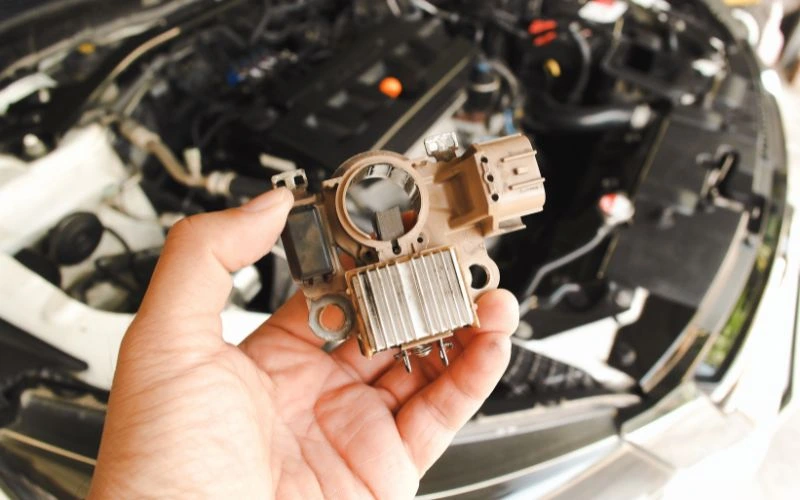
Bridge rectifiers are important components in electronic circuits that convert alternating current (AC) to direct current (DC). Although they are widely used and generally reliable, some common problems can arise with bridge rectifiers. Understanding these issues can be helpful in troubleshooting and ensuring the proper functioning of electronic devices.
A common problem with bridge rectifiers is overheating. This can be caused by too much current flowing through the rectifier, resulting in increased resistance and heat generation. Overheating can cause the rectifier to fail, resulting in loss of power or even damage to other components in the circuit. To avoid overheating, it is important to ensure that the rectifier is properly rated for the current it can handle and that it is adequately cooled.
Another problem that may arise is voltage drop. Bridge rectifiers have a forward voltage drop, which means the output voltage is slightly lower than the input voltage. While this is expected, excessive voltage drop can result in reduced circuit efficiency and performance. To minimize this problem, it is important to choose a rectifier with low forward voltage drop.
Additionally, bridge rectifiers can be susceptible to reverse voltage drops. This occurs when a reverse voltage is applied to the rectifier, causing it to break down and conduct in the opposite direction. This may cause damage or failure of the rectifier and other circuit components. To avoid reverse voltage drops, it is important to use diodes with high reverse voltage withstand voltage and ensure correct polarity in the circuit.
By knowing these common problems in bridge rectifiers, engineers and technicians can take appropriate measures to prevent problems and ensure reliable operation of electronic devices. Regular maintenance, proper component selection, and adherence to safety guidelines are essential to maximizing the life and performance of bridge rectifiers.
In summary, this post has covered various aspects of the keyword “bridge rectifier” to provide a comprehensive understanding of its meaning and applications.
We start by looking at the basic concept and how a bridge rectifier works. Understanding its operating principles is crucial to understanding its importance in converting alternating current (AC) to direct current (DC).
Below, we discuss the pros and cons of using a bridge rectifier. Advantages include its simplicity, efficiency and cost-effectiveness, making it a popular choice in many electronic devices. However, we also highlight their limitations, such as voltage drops and the need for adequate heat dissipation.
Additionally, we examine the wide range of applications in which bridge rectifiers play a crucial role. From power supplies in electronic devices to battery charging circuits, bridge rectifiers are essential in many industries.
We also look at the different types of bridge rectifiers, including full-wave and half-wave configurations, and discuss their unique features and applications. Understanding these differences is essential to selecting the most appropriate type for specific needs.
Additionally, we examine the main components of a rectifier bridge, highlighting the importance of diodes and their role in the rectification process. We also highlight common problems that can occur with bridge rectifiers, such as: For example, diode failure and overheating, as well as troubleshooting tips and preventative measures.
Future developments and trends in power electronics may impact the design and efficiency of bridge rectifiers. Advances in semiconductor technology and growing demand for renewable energy sources are expected to drive innovation in this area.
Lastly, we would like to thank you for reading this post and encourage you to leave comments or feedback. Your insights and experiences are valuable in fostering a collaborative learning environment. Stay tuned for more informative content on bridge rectifiers and related topics.

